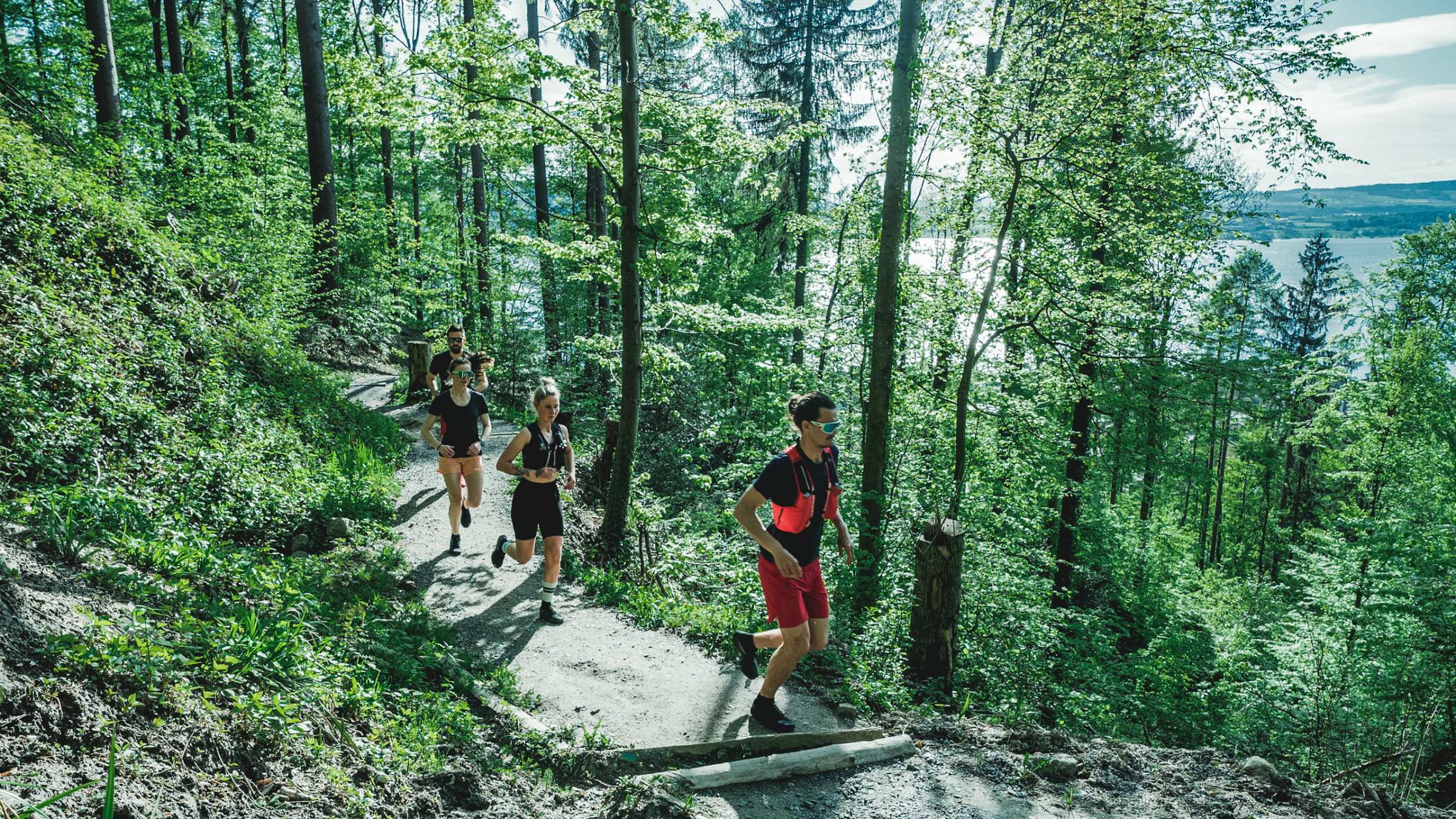
Next Up

What drives us is a belief that outdoor experiences are a profound source of pleasure and joy. Running outdoor is one of the easiest ways to experience this joy. By enabling more people to experience the wonders of the outdoors we hope to help build greater respect for it and in turn, protect it. This doesn’t have to mean crowds or higher pressure on nature, but instead better ways to share the adventure with one another. We believe this helps our relationships, local economies and a sustainable future for the planet, but more importantly, is the way to enjoy life.
Everyone is welcome in to experience nature but visitors are asked to follow a few simple instructions.
Visitors are requested to respect and show consideration for nature and other forest visitors. To always stay on the paths. And to visit the forest only during the day if possible, because the animals are severely disturbed at dusk and at night. The forest is a habitat and retreat for many plants and animals. As visitors to the forest, we should all respect nature!
Trees are the building blocks of the forest. Take care of them because any injury (e.g. a notched heart in the bark) damages the tree and is a gateway for harmful fungi and insects, and and injured trees no longer grow properly.
Wild animals need rest and should not be disturbed. Consideration is required, especially in spring, when the young are born. Wild animals should not be fed, this will harm them more than it will help. Wild animals and their dwellings should not be touched and certainly not destroyed. Stay on the paths and if running with a dog, keep them on a leash at all times. Dogs are to be kept under control at all times, otherwise, they can massively disturb other forest visitors or wild animals. The leash is generally required in nature reserves.
An important part of following trail etiquette includes the guiding principles of leaving no trace. In the outdoors, it’s just as important to consider your etiquette towards people as it is to the wildlife and the environment around you. Always carry in and carry out your trash, recyclables and food waste, and make sure you are following Leave No Trace principles when it comes to human waste. But carrying out trash shouldn’t just be limited to your own. If you find other trash on the trail that others left behind, pack that out too. Leave it better than you found it!
Swiss law stipulates that everyone is allowed to collect and take wild berries, mushrooms and the like in the forest "to the extent customary in the area".Plants, mushrooms, berries and flowers can be collected. But rare and protected species may not be picked or dug up. Collect with measure (what grows back), and only take for personal use.
Lying wood and branches can be collected and taken away. Make sure to not damage trees or young growth. No trees may be cut and no firewood may be taken away. So that the forest can fulfil all of its functions at all times, it is specifically cared for and managed by forestry experts. The professional forest work must not be hindered or impaired by the visitors.
Forest management is the right of the owner and has priority. For the safety of everyone, the following rules must be observed:
Forest barriers must always be respected: they serve for safety and make the work of foresters easier.
A cordon means "route blocked: danger to life".
A warning triangle means “Passage is permitted, but caution is advised”.
The instructions of the forest staff must be followed at all times.
Climbing trees can be dangerous and can lead to serious accidents.
Hunting is essential to regulate game populations and thereby guarantee the rejuvenation of the forest. In order not to disrupt hunting, visitors to the forest should stay on the trails and keep dogs on a leash. Hunting platforms are for hunters; visitors should not climb these, because the risk of accidents is high.
As the largest, and (usually) least-predictable creatures on the trail, horses get the right of way. If you’re sharing the trail with horses, give them as much space as possible and make sure not to make abrupt movements as they pass and talk calmly when approaching to avoid startling the animal.
Trails may cross fields with cattle or other farm animals. You are expected to close the fence once you have passed. Do not enter fields unless they're clearly marked as part of the trail. Cows, in particular when accompanied by calves, may act aggressively when disturbed. Pass cows quietly, without sudden moves, and keep at a distance of at least 20m. Do not position yourself between calves and their mother. Do not ever pet or feed cows.
Proper trail etiquette requires the person going downhill to always give way to the person going uphill. The reason being is simply that the person going uphill have a narrow field of vision since they are concentrating on the smaller and more immediate areas in front of them. Plus, they are working hard against gravity to have a good pace and momentum to get them up. If you are trying to pass another fellow runner. Wait until the trail is wide enough, and let them know you’re there. For a solo runner, it’s easier to step aside and let a group pass, keep to the right and pass on the left.
If you are on a shared trail, be aware that mountain bikers, It’s harder for bikers to slow down, so runners should always be on alert. In these types of situations, if it’s easier for you as a runner to step aside, why not help the biker out, so they don’t lose momentum especially if they are going uphill.

Next Up